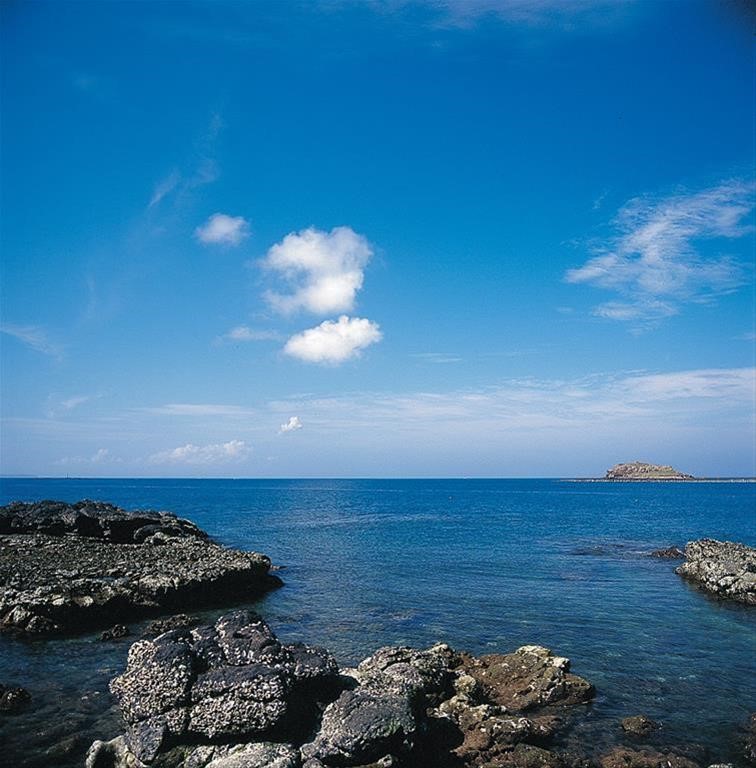View count:
2765
Attractions
Penghu Geopark possesses many tourism attractions including Tongpan Geology Park; Twin Hearts Stone Weir; Waiting Husband Reef; Tiantai Hill; Yuanyang Hole; Jiangjyun Cave; Daguoye Columnar Basalt; Xiaomen Islet
a. Tongpan Geology Park[1]
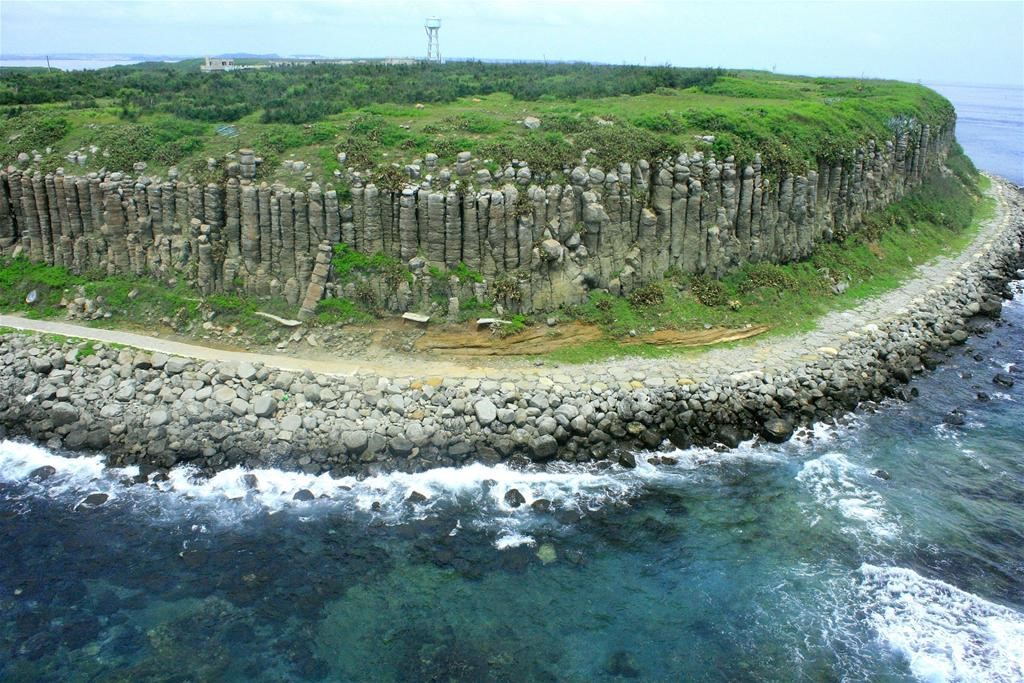
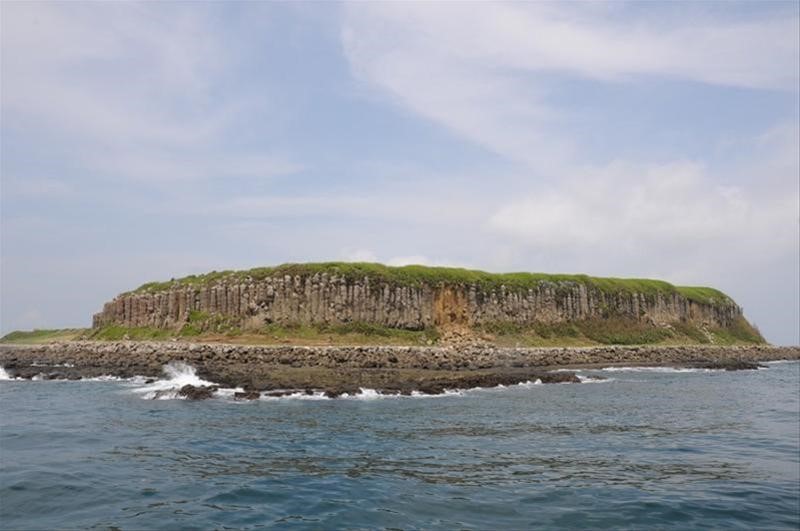
Tongpanyu is 6 nautical miles off the coast of Magong Island; the entire island is surrounded by columnar basalts of clear lines, the columnar joints is the most enriched in Penghu, and has long been known as the "Yellowstone Park of Penghu". The columnar joints and platy joints on this island are all very well-developed; originally a hexagon or pentangle, the rock columns are now pretty much circular on the edges due to the fierce weathering and erosion, the color has also faded due to oxidation, some tip of the columnar basalt have already been weathered into a ball shape. The abrasion platform on the southwest coast of Tongpan has a concentric circles platform formed by the basalt lava, called the "lotus platform"
b. Twin Hearts Stone Weir[2]
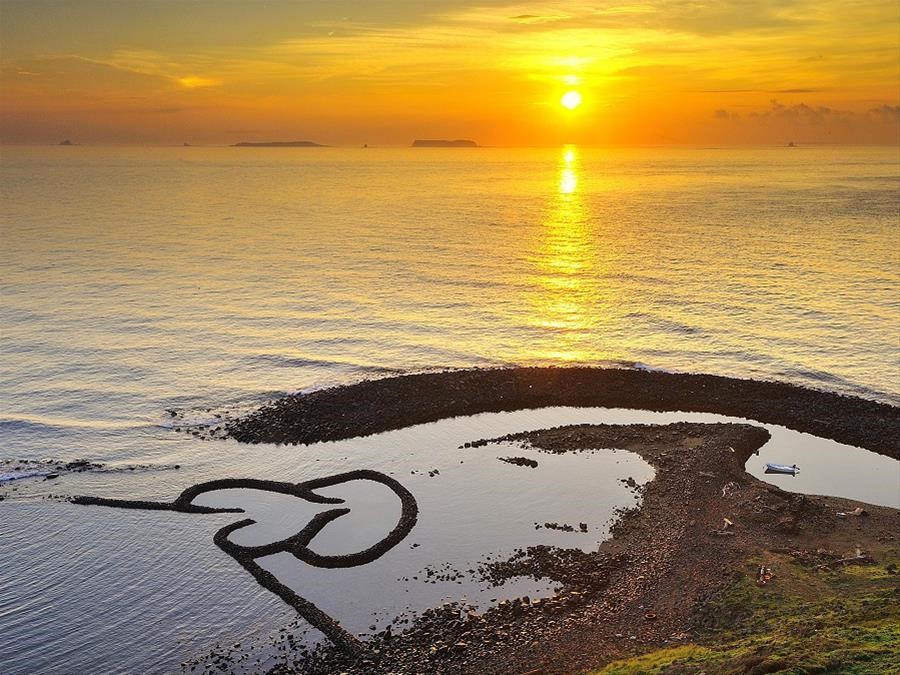
There are totals of 558 stone weirs in Penghu, and up to 88 of them are distributed around Jibeiyu. They rank first in the world both in terms of number and density. Local ancestors fed generations of offspring toiling away with these stone weir, therefore, Jibeiyu has all the reasons in the world to be called “home of the stone weir”.
Qi meiyu has only one stone weir, but because it is shaped like two hearts both beautiful and romantic, it is famous for being the "twin hearts stone weir”. It had been voted the No. 1 most beautiful scene in Penghu consecutively. Originally, the twin hearts stone weir was built out of basalt and coral reefs as traditional traps for fishing. Soon after the catches had gradually decreased these days, but the twin hearts design of the stone weir has attracted endless tourists here to visit.
Twin hearts stone weir is the most well-preserved stone weir in the entire Penghu. If you want to see the twin hearts stone weir, make sure to check the tide ebb time for that day to see the complete twin hearts shaped stone weir.
Penghu Stone Weir Festival: Penghu Stone Weir Festival is a very big event for tourism in Penghu. In addition to allowing tourists to experience the special stone weir tour, celebrities are also invited to perform. Opening ceremonies are hosted, and there is also the stone weir fishing experience. That is where tourists can enter the weir atrium with the stone weir owner, and net fishes that are trapped inside the stone weir. Its also complete with activities of the Penghu Gourmet Carnival. The resource of stone weir has become the best humanity's tourism resource in Penghu, driving the tourism in Penghu.
c. Waiting Husband Reef[3]
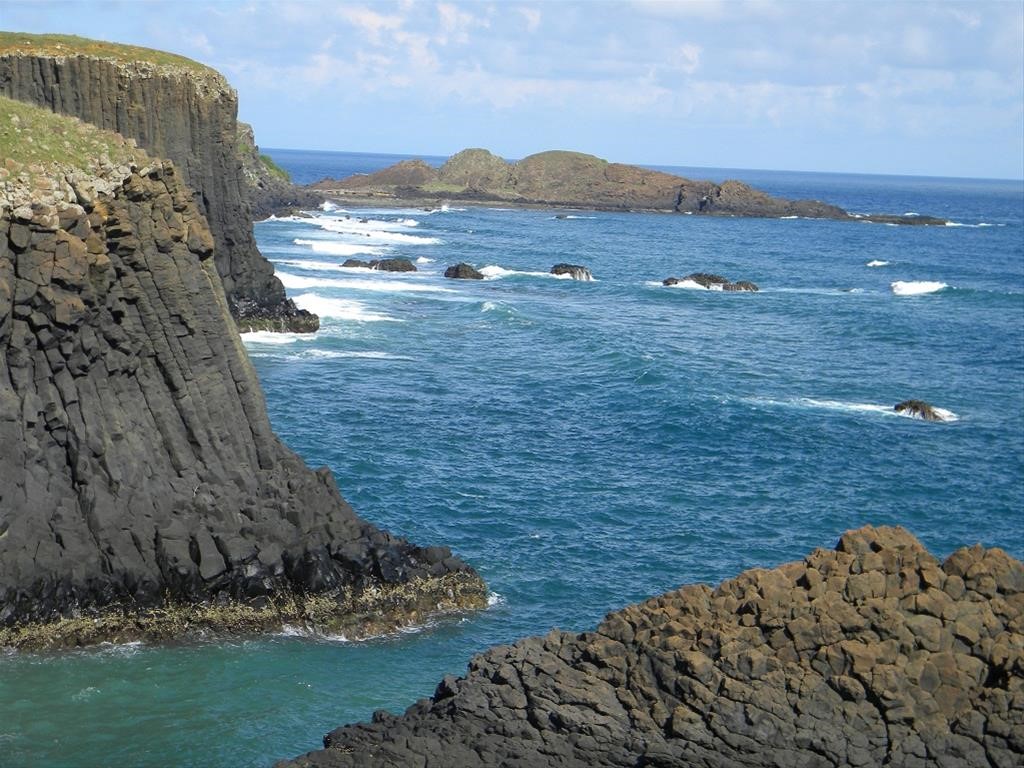
There is a sad, yet beautiful legend regarding the Waiting Husband Reef. It is said that there was a loving couple near the Seven Beauties Tomb, and the husband went out fishing every day. He would leave early in the morning and return late at night. The wife would also wait by the sea every evening for her husband to return. One day, when she was still waiting, a storm suddenly occurred and the waves were fearsome, she waited the entire night in panic. The second day, she went to the south-end sound of the Yueili Port and waited for the entire day. She wanted to see her husband return home safe and sound, but he didn’t. Even in despite of what others told her, she still just waited by the sea. By the end of the third day, she finally collapsed by the south-end of the Yueili Port at night, and when others found her, it was already too late! After countless years, the rock by the sea miraculously took the shape of a human form. The amazing part is that the stone had a bulging belly, just like a pregnant woman. The later generations all believe that this is the image of the woman who waited night and day for her husband to return. If you climb onto the Waiting Husband Reef, then you can watch the boats and seabirds from a distance. Continue down the path and there is a small concrete bridge. When you look down from the bridge, if the waves are big enough, you will be able to see the beautiful yet fierce waves clashing against the coast. It is also an important fishing ground in Qi mei.
d. Tiantai Hill[4]
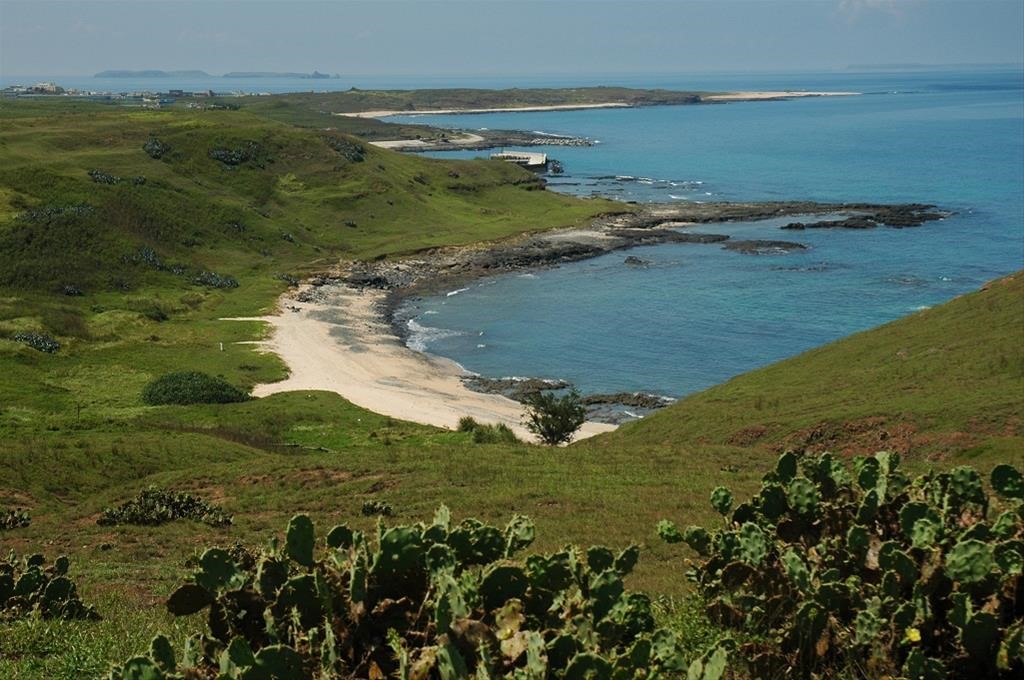
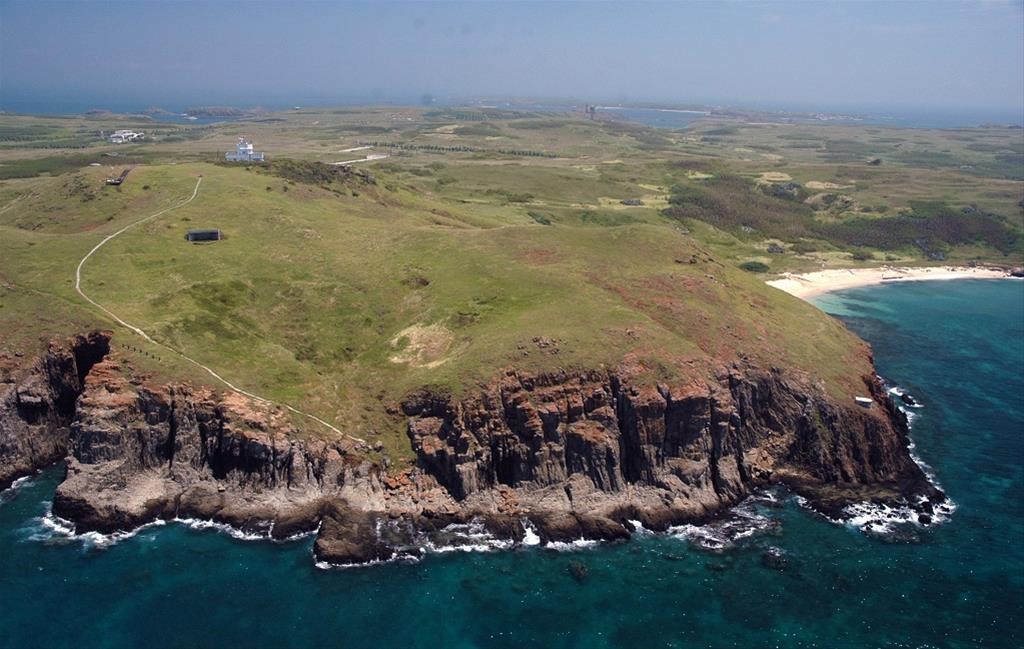
Tiantai Hill is situated on Wang an Island. Gangciou Grassland is the highest place on Tiantai Hill, and nearby is the place for the famous Penghu aragonite. The surrounding grassland is flat with occasional cattle or goats trotting by and forming a naturally beautiful scene. Tiantai Hill has become the best place to watch Wang an Island and Huayu from a distance.
Tiantai Hill is a piece of Micro-gabbro rock with sheeting joints. There is a magnificent basalt landscape beneath the sea cliff on the west side. If you follow the path down to the west coast, then you will see an amazing sea hole up to 30m high. The beauty of Micro-gabbro joint is different to the columnar basalt landscape on Hujig and Tongpan, where the interlacing joints form a beautiful “stone flower”.
Ask at the South Sea Tourist Center for the boat schedule. You can choose either a public commuting boat, or a private yacht tour. Take the boat from Magong Third Fishing Port, then when you reach Tanmen Port Tiantai Hill will not be far down on the northwest side.
e. Yuanyang Hole, Jiangjyun Cave[5]
“Mandarin ducks dabbling water — Yuanyang Hole” is situated northeast of Wang an Island and it is a naturally formed valley. Legend has it that in the early days there were many water holes here, and mandarin ducks used to dabble with water and rest here. So because of that it was named “Yuan yang (mandarin duck in Chinese) Hole”. The sea has a Maanshanyu as a barrier; therefore, it was made into an important Navy base by the Japanese army during the Japanese colony. “Cangjyun Cave” is a historical remain in this area, in 1994, the Japanese army labored the residents on Wang an and Jiangjyun islands, and dug this cave to store gun power and weapons. It was also to be used as a bomb shelter for residents to hide from air raids. Just before it was to be completed, Japan declared unconditional surrender, and the base was abandoned. Many caves have long collapsed, but some remains can still be seen.
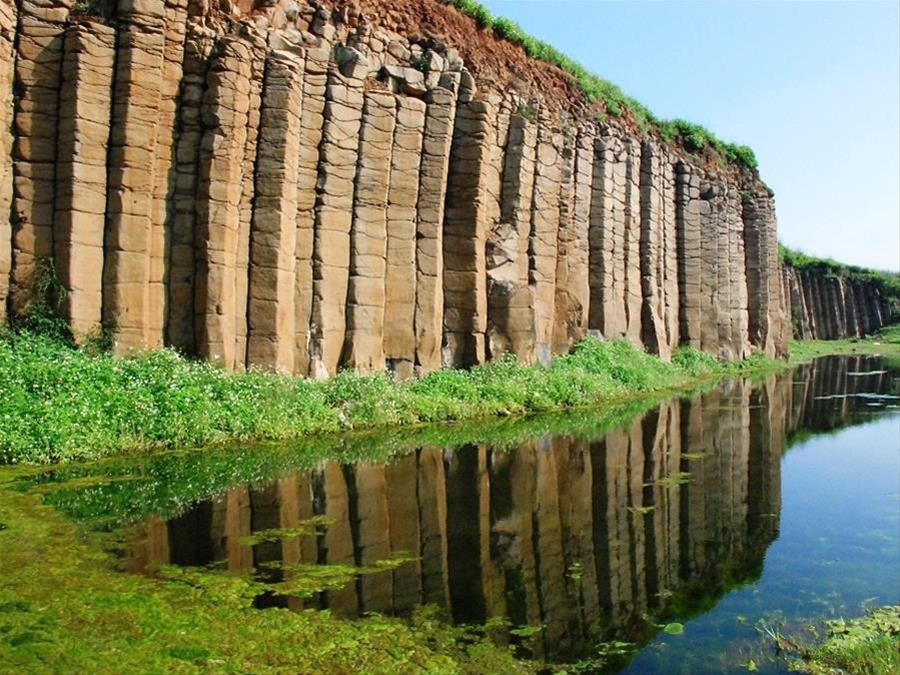 During the Japanese occupation, a wharf was planned to be built at the seaside of Daguoye to improve marine communications between Magong Island and Xiyu. While the workers were digging earth and stones away, they found the impressive columnar basalt which had been buried and had been in sound sleep for thousands of years. We can say that it is the most accessible columnar basalt in Magong Island.
During the Japanese occupation, a wharf was planned to be built at the seaside of Daguoye to improve marine communications between Magong Island and Xiyu. While the workers were digging earth and stones away, they found the impressive columnar basalt which had been buried and had been in sound sleep for thousands of years. We can say that it is the most accessible columnar basalt in Magong Island.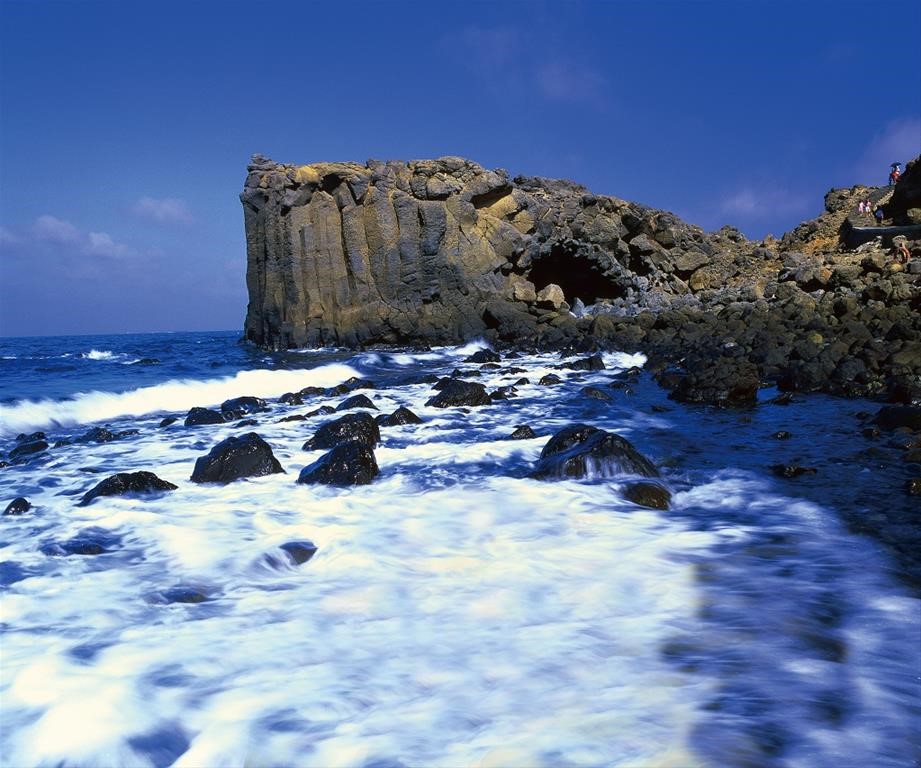
Xiaomen Islet is located in the north of Hsiyu, away from a 20-meter wide water passageway, and connected to a bridge. On the contrary to its small size of only 0.5-square kilometre, Xiaomen Islet features every characteristic of the Pescadores. It is also known as the outdoor geological classroom.
Xiaomen Islet is a lava plateau with a slope descending from north to south. Its southern end is a crowd of villages, and basaltic cliffs are made up of the other three shores. Here, it is easy to observe the ball-shaped porous basalts, the unique iron quartz sandstone, iron clay layers, fossil-doped shell limestone, and water-eroded bad terrains.
The famous “Whale Cave” got its name from its physical resemblance of a whale appearing from water. The Whale Cave was originally a basaltic cliff. After years of erosion, it has now become a sea-eroded arch. Nevertheless, beehive-type vegetation fields can also be found in Xiaomen Islet. Surely, don’t miss the “Xiaomen Geological Museum” of its geological secrets and history
[1] https://www.penghu-nsa.gov.tw/English/ScenicSpotDetail.aspx?Cond=9c381906-f410-4591-948d-84c7ae01f269
[2] https://www.penghu-nsa.gov.tw/English/ScenicSpotDetail.aspx?Cond=a98c092b-65f5-4b7e-bbb3-de16bf9be2cf
[2] https://www.penghu-nsa.gov.tw/English/ScenicSpotDetail.aspx?Cond=a98c092b-65f5-4b7e-bbb3-de16bf9be2cf
[3] https://www.penghu-nsa.gov.tw/English/ScenicSpotDetail.aspx?Cond=c49125eb-d79f-4f16-8843-783813fa286c
[4] https://www.penghu-nsa.gov.tw/English/ScenicSpotDetail.aspx?Cond=83224351-86eb-4d88-93a8-930be0374a8f
[5] https://www.penghu-nsa.gov.tw/English/ScenicSpotDetail.aspx?Cond=a8a60fed-84b7-4172-8302-bbca8600f08c
[6] https://www.penghu-nsa.gov.tw/English/ScenicSpotDetail.aspx?Cond=d04d4a89-9d51-495a-a317-2aa1c00ea0e7
[7] https://www.penghu-nsa.gov.tw/English/ScenicSpotDetail.aspx?Cond=faa39b76-3a75-4ca4-8de3-51b1ac06035d











